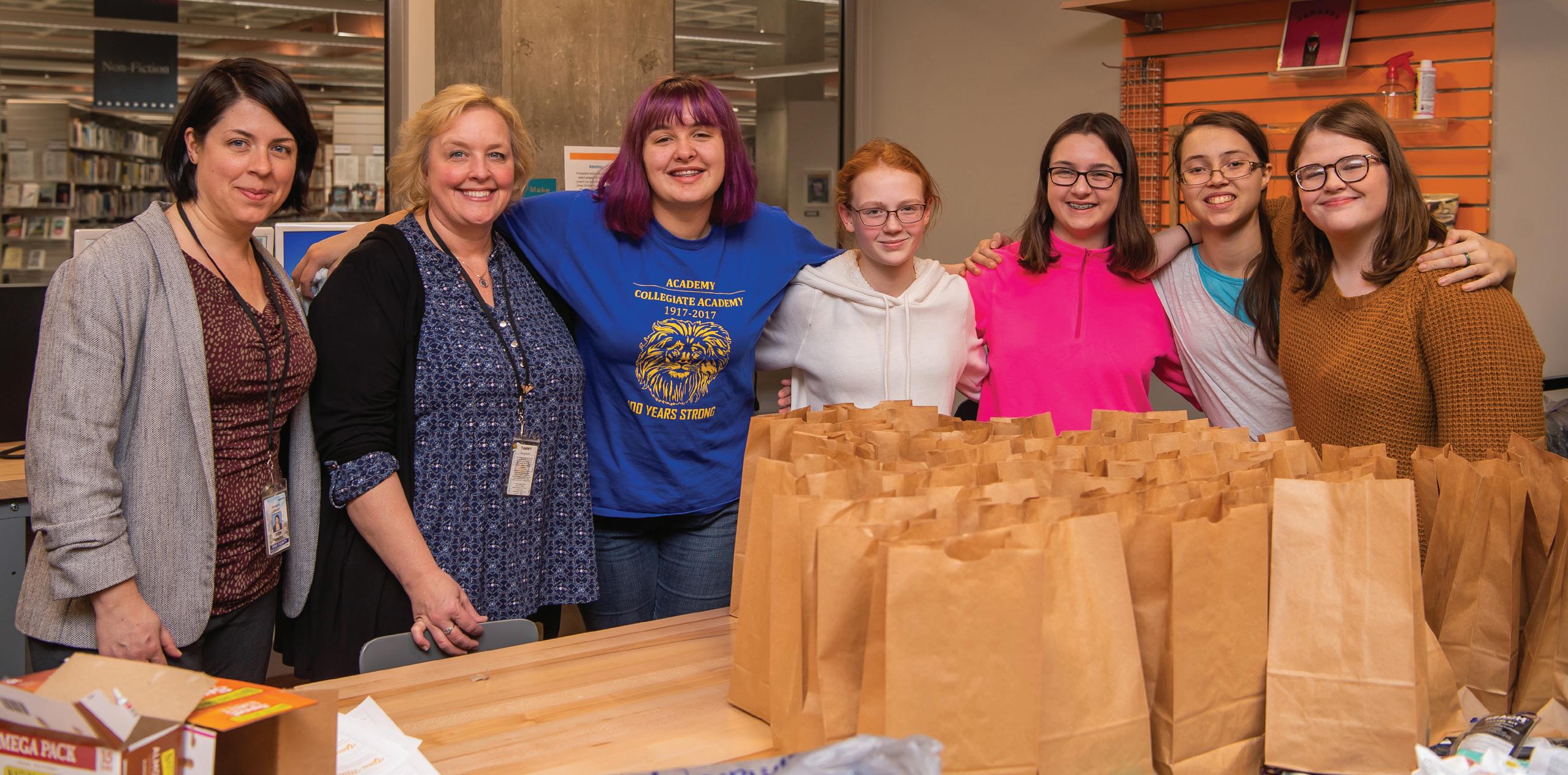
2 minute read
Integrating Civic Engagement
In addition to aligning TRL with positive youth development, research has revealed that civic engagement could be a draw for youth of color and might deepen their learning outcomes. For example, Black and Latinx youth tend to be more involved in programs if they have opportunities to address issues of personal importance in their communities.30 Inclusion of civic engagement projects and topics generated by book discussion were also a standout in an expert interview with Dr. Barbara Ferman, Director of the University Community Collaborative (UCC).31 UCC offers a menu of civic engagement initiatives that center the voice and experience of urban youth. Her recommendations included recruiting and training youth who were program alumni to serve as facilitators. PA Humanities prioritized civic engagement because it allows for the exploration of the humanities and researchers have documented the positive impact of community engagement on youth of color.32, 33
In 2017-18, PA Humanities integrated civic engagement into the TRL model and host sites were asked to develop civic engagement projects with youth during the program year. Using a modified version of the Five Stages of Social Action (Adams-Bass, 2016), sites used book discussions as a springboard to identify topics and issues that were of interest to youth. Facilitated discussion helped youth think critically about these ideas and make connections to their lives and their communities. As a result, many sites design unique community projects to address local needs. Evaluation results indicated improvement in youth’s ability to express empathy towards others, communicate with others, express themselves, and solve problems. These are skills youth have an opportunity to practice during book discussions and when developing and participating in civic engagement projects.

— Teen Reading Lounge regular Clara Tupitza
After young people at Erie County Public Library’s Teen Reading Lounge read Monica Hesse’s young adult novel “The War Outside,” their book discussion turned toward need and access to resources in their own community. They used the story, about German and Japanese families being held as prisoners of war at a Texas internment camp in the 1940s, to think about life in Erie and how those facing housing insecurity survive in the harsh northwestern PA winters. That conversation led to the teens creating “blessing bags” filled with essentials for the city’s homeless population. The teens publicized their project at the library, received donations from the community and filled the bags with socks, hats, gloves, and toiletries. They also made nonperishable food bags with water, granola bars, nuts, and beef jerky and delivered everything to the Upper Room of Erie, an area homeless services agency.








